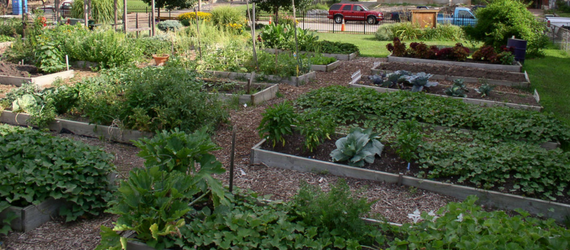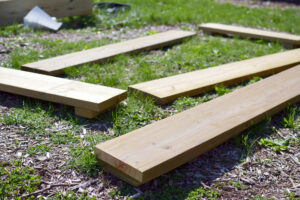Treated Lumber in the Garden


Over the years, many people have expressed their concern over Seed St. Louis’ decision to use treated lumber for gardening purposes. Today, we would like to take a moment to address those concerns and to provide information on the different types of treated lumber available in general and the materials Seed St. Louis uses in particular.
What is Treated Lumber?
Treated lumber is wood that has had compounds added to it in order to prevent wood-decaying organisms (bacteria, fungus, and insects) from decomposing the wood (1). Treated lumber is typically “pressure treated,” meaning high pressures are used to force preservative compounds into the wood. This provides more protection long term than a simple surface coat would.
Unlike untreated lumber, which will quickly start to break down when left exposed to the elements and wood-decaying organisms, treated wood remains usable for many years (1).
The History – CCA Lumber Treatment
Throughout much of the 20th century, lumber companies relied on a lumber treatment that utilized Chromium, Copper, and Arsenic (CCA). Studies found that arsenic could be leaching into soils that came into contact with the CCA treated lumber. However, arsenic is a compound found naturally in soils and the leaching was considered to be within safe limits.
Although CCA treatments were not found to pose an “unreasonable risk to the public” (2), the EPA decided to reduce Arsenic exposure, (3) (2) leading companies to cease manufacturing CCA lumber for residential use (4) in December of 2003.
After the 2003 EPA decision1, horticulturally focused authors and agriculture enthusiasts began to warn gardeners of the risk of using CCA treated lumber for gardening purposes. Similarly, Seed St. Louis does not use CCA treated lumber for its gardens, urban farm, or other civic greening projects.
Lumber after CCA

In the aftermath of the 2003 EPA decision1, the lumber industry developed several alternative treatments which provided the same level of decay resistance as CCA treated lumber, without using arsenic or chromium.
Seed St. Louis uses the Lifewood brand of lumber which is treated with micronized copper azole. According to the Missouri Department of Agriculture and the USDA’s Forest Products Laboratory, Lifewood’s copper azole treatment “is comprised of 96-percent copper and 4- percent tebuconazole,” a fungicide (5) (6).
The Lifewood brand was the first lumber treatment brand to be certified by the Scientific Certification System (SCS) as an “Environmentally Preferable Product,” meaning that it meets qualifications for this environmental certification based on an independent life cycle assessment (7). (The qualifications to receive this certification can be explored on the SCS’s website (8)). Products that receive Environmentally Preferable Product certification have been independently assessed to verify that the product is better for the environment than the prevailing, similar products (8)). Products that receive Environmentally Preferable Product certification have been independently assessed to verify that the product is better for the environment than the prevailing, similar products.
The copper azole lumber treatment is considered to be a safe choice for raised vegetable beds. University of Missouri Extension states that copper azole is as safe for raised beds as a similar type of wood treatment, known as ACQ, and confirms, “exposure to copper from contact with ACQ-treated wood is not expected to have adverse effects on the health of adults or children” (9).
While it is a known fact that some amount of copper and the fungicide tebuconazole will leach from the lumber into the soil over time, this happens at such low levels it is not considered dangerous. In fact, copper azole treated wood is actually suggested by Iowa State University Extension for use in raised vegetable beds (10).
The Use of Copper in Lumber Treatments
Copper is a common component of treated lumber because of copper’s antifungal properties (2)(9). Copper’s antifungal nature helps to prevent fungus from colonizing and decomposing wood, allowing treated lumber to last longer than untreated lumber.
Although there is a fair amount of copper in Lifewood brand lumber, the life cycle assessment of the product states,
Wood products treated with the Osmose MicroPro process result in the release of 90% to 99% less copper into aquatic and terrestrial environments when compared to standard treated wood products. The very small amount released bonds readily to organic matter in the soil and becomes biologically inactive, thus effectively eliminating eco-toxic impacts (11).
In short, although there is more copper in the copper azole lumber it actually leaches less copper into soil than the CCA treated lumber over time. The small amounts of copper that do leach are soon trapped in the soil, meaning it cannot be taken up by vegetable plants.

Researchers at Pennsylvania State University have also studied copper leaching while studying CCA treated lumber for use in gardening, and discuss some of their findings in a publication. When discussing potential leaching of arsenic (As), chromium, (Cr) and copper (Cu) from the old CCA lumber, the researchers found that:
When trace elements such as these three are added to soil, most of what is added is not available for plant uptake. Chromium and copper are bound very strongly by soil particles, especially by soil clays and organic matter. They are most strongly bound in near-neutral soils (pH 6–8) and become more soluble in acidic soils (pH less than 5). As a result, Cr and Cu tend not to move in soil, and only a small fraction of what is added to the soil can be taken up by plants (2).
The publication later emphasizes this by stating that gardeners can avoid potential plant uptake of these nutrients by “Maintain(ing) soil pH in the near-neutral range (pH 6–7). Solubility of Cr and Cu is greatly reduced in neutral soils,” and, “Maintain high soil organic matter levels by adding compost or manure. Organic matter strongly binds As, Cr, and Cu and thus reduces their availability to plants,” two things that gardeners typically do as part of their regular gardening efforts (2). Even if some copper is absorbed by plants, Pennsylvania State University states that:
…the human body can tolerate relatively large intakes of Cr and Cu and is also able to excrete excess amounts of these metals. Furthermore, plants are less tolerant of Cr and Cu than humans are. This means that Cr and Cu would kill plants before plant tissue concentrations could get high enough to cause a chronic toxic effect in humans from eating the plants (2).
In summary, research shows that although the copper azole treatment is 96% copper and is known to leach into the surrounding soil:
- Leached copper is quickly bound up in clay and organic matter so that it is highly unlikely that garden plants would absorb it.
- Copper is far more toxic to plants than humans, meaning that garden plants would die before carrying harmful levels of copper to the dinner table.
- Copper is actually an essential nutrient for humans, and our bodies are able to absorb the needed amount, then safely pass any excess.
The use of Fungicide in Lumber Treatments
Like copper, the fungicide tebuconazole is added to copper azole treated lumber in order to prevent fungus from rotting away lumber. More specifically, the fungicide is needed to control certain wood-rotting fungus that copper cannot kill (12).
According to a study done for the European Union, “An accumulation of tebuconazole in soil is not anticipated when tebuconazole is used as a wood preservative” (13). It further states that, “Tebuconazole has a low mobility potential” (13) meaning that the fungicide is unlikely to leach from the treated lumber and into the surrounding garden soil to any significant degree.
Two different studies where tebuconazole was sprayed on the soil surface found that it was readily locked up by the soil during experiments, with most of it staying within 2” of the surface (14). Further research revealed that tebuconazole’s mobility in an agricultural field (as opposed to a controlled laboratory setting) is similarly immobile, though when organic matter is added it becomes more mobile in the soil with most of it remaining within 1-4 inches of the soil surface (15). However, the organic matter also speeds up tebuconazole’s decomposition in the soil so that it has a half-life of only 8-12 days when soil has added organic matter (15).
Although these results are not a perfect analogy because the studies relied on applying tebuconazole directly to the surface of the soil rather than being bound to wood, they do provide a fairly accurate idea of the movement and leaching capabilities of the tebuconazole fungicide used in treated lumber.
Lumber used by Seed St. Louis

The treated lumber Seed St. Louis uses to build raised beds is only treated with copper and a fungicide tebuconazole. This type of treated lumber results in far less leaching than alternative lumber treatments. The components that do leach are mostly locked up by clay and organic matter in soil meaning it is harder for the plant to absorb it.
Copper becomes even harder for plants to absorb when the soil is a neutral pH, a goal most St. Louis gardeners strive for in order to grow the best possible vegetables.
It is also harder for plants to absorb copper if organic matter (compost) is added, which gardeners in the St. Louis region typically do in order to promote healthy vegetable production.
If a plant does absorb copper, the plant would die before it could absorb enough to be dangerous for human consumption. Even if someone were to eat a plant that has absorbed copper, and the copper had moved into the edible parts of the plant, the human body is adapted to get rid of excess copper – an essential element in the human diet.
Lumber treated with tebuconazole is not expected to release worrisome amounts of the fungicide into the soil given that it is found in the wood and in the soil immediately next to it only. Even when the fungicide was sprayed on the soil surface during testing trials, most of the fungicide only moved 1-4” down when soil was properly amended. However, amendments sped up the breakdown of the fungicide.
Why not use Untreated Wood or Cedar?
Many ask about “natural” alternatives to treated wood, or ask why we do not just use untreated wood or naturally rot-resistant wood like cedar. While we technically could use “natural” alternatives, there are several key reasons why Seed St. Louis recommends the treated option instead.
The main reason we do not use untreated lumber is because the most readily available untreated lumber is pine, which is a softwood and rots very quickly. Researchers at the University of Georgia report that, “pine has almost no resistance to rot or insects and has a very short life when used in direct contact with soil” (16).
Untreated hardwoods like oak are more rot-resistant but have their own drawbacks. Firstly, only the heartwood of lumber is resistant to rot, with the sapwood of even rot-resistant species being just as susceptible to rot as the sapwood of the more rot-prone softwoods (1). So for woods like oak to be longer lasting than pine you need to make sure you are buying lumber that doesn’t contain sapwood. It is also generally difficult to find those harder woods in sizes good for raised beds and they are significantly more expensive than treated pine, and “based on most research, provide only slightly more rot and insect resistance than pine” (16).
By far the favorite wood material for those trying to avoid all treatment processes is western red cedar. Although cedar is a great wood if you are trying to avoid all treatment it is still not ideal for Seed St. Louis’ school and community garden programs. The biggest reason is cost. Cedar boards usually cost four to five times more than treated pine. This much greater cost would reduce the number of gardens Seed St. Louis currently serves by 75%.
In addition to the upfront cost, despite cedar’s rot-resistant nature, it still has a shorter lifespan than treated lumber when in contact with soil (17). Researchers at the University of Georgia report that fence posts made of treated pine can last up to twice as long as western cedar. Even comparing the best case for cedar to the worst case for treated lumber, the treated lumber still lasts longer (17). Although a fence post isn’t exactly the same as a raised bed it does give a good idea of how the different woods will respond to being in constant contact with soil and regional weather conditions.
Final Thoughts
We hope that we have been able to address and alleviate many of the concerns gardeners often voice at the use of treated lumber in local community garden projects. If not, please do not hesitate to reach out to our staff to ask questions!
Footnote:
Sources Cited:
1. https://www.extension.umn.edu/garden/yard-garden/landscaping/selecting-preservative-treated-wood/
2. http://extension.psu.edu/plants/crops/esi/treated-lumber
3. https://www.youtube.com/watch?v=NzL6gLKUq_4
4. https://www.epa.gov/ingredients-used-pesticide-products/chromated-arsenicals-cca
5. http://agriculture.mo.gov/plants/pdf/wood.pdf
6. https://www.fs.fed.us/t-d/pubs/pdfpubs/pdf06772809/pdf06772809dpi72pt03.pdf
7. https://www.scscertified.com/products/cert_pdfs/Koppers_2017_SCS-EPP-01699b_s.pdf
8. https://www.scsglobalservices.com/environmentally-preferable-product
9. http://extension.missouri.edu/p/G6985
10. http://www3.extension.umn.edu/sites/default/files/download/PM870B.pdf
11. http://www.culpeperwood.com/images/uploads/mplwpreservativetreatmentspec.pdf
12. https://www.fs.usda.gov/treesearch-beta/pubs/21521
16. http://extension.uga.edu/publications/detail.cfm?number=C1027-5
17. http://extension.uga.edu/publications/detail.cfm?number=C1027-5

